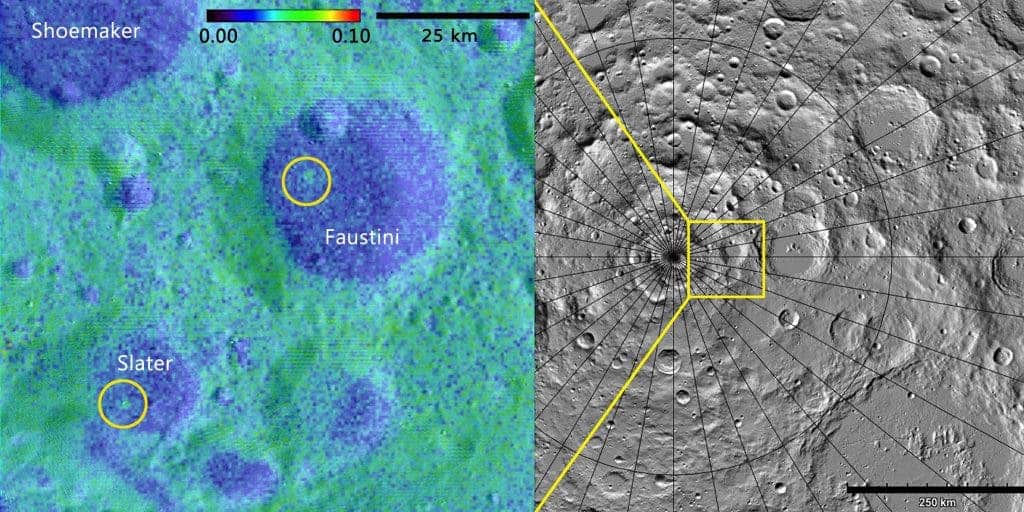10

Topographic map credit: NASA GSFC/ASU Jmoon
Understanding the Moon’s recent geological history is important and could put the entire solar system into perspective.
“These ‘young’ impact craters are a really exciting discovery,” said SwRI Senior Research Scientist Dr. Kathleen Mandt, who outlined the findings in a paper published by the journal Icarus. “Finding geologically young craters and honing in on their age helps us understand the collision history in the solar system.”
Using LAMP and LRO’s Mini-RF radar data, the team mapped the floors of very large, deep craters near the lunar south pole. The craters are very difficult to study because the Sun never illuminates them directly. However, tiny differences in the craters’ reflectivity (also called albedo) allows researchers to estimate their age.
“We study planetary geology to understand the history of solar system formation,” said SwRI’s Dr. Thomas Greathouse, LAMP deputy principal investigator. “It is exciting and extremely gratifying to happen upon a unique and unexpected new method for the detection and age determination of young craters in the course of nominal operations.”
Space collision played a key role in the solar system’s formation and history, including in the history of the Moon itself. The satellite is riddled with meteorite impact craters, and by dating the craters, the frequency and intensity of collision through time can also be understood. A press release from the Southwest Research Institute reads:
“When a small object collides with a larger object, such as the Moon, the impact creates a crater on the larger body. Craters can be a few feet in diameter or several miles wide. During the impact, the material ejected forms a blanket of material surrounding the crater. The ejecta blankets of “fresh,” relatively young craters have rough surfaces of rubble and a sprinkling of condensed, bright dust. Over millions of years, these features undergo weathering and become covered with layers of fluffy, dark dust.”
To make this discovery even more intriguing, the same technology could be used to study the craters on other objects.
“Discovering these two craters and a new way to detect young craters in the most mysterious regions of the Moon is particularly exciting,” said Mandt. “This method will be useful not only on the Moon, but also on other interesting bodies, including Mercury, the dwarf planet Ceres, and the asteroid Vesta.”






